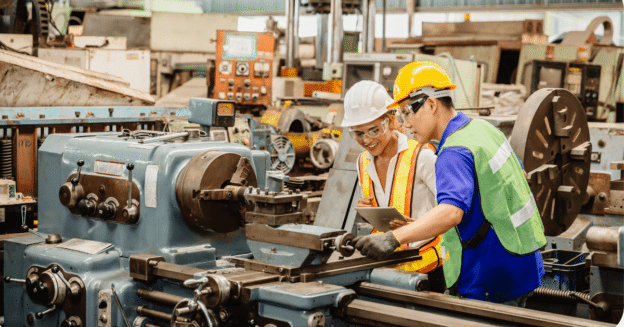Whether you want to save on tooling costs or you’re in the early stages of prototyping, machining cast urethane parts may be the most cost-effective solution for you. You can perform several machining operations such as grinding, fly-cutting, milling, facing, and turning as secondary operations. But machining urethane or any elastomer is quite different from machining, say, a metal.
What Is Machining Cast Urethane Parts?
Urethane is a polymer that’s used to make a variety of commercial and industrial plastic items. It is so versatile that you can create very rigid products as well as very flexible items that are almost rubbery in texture.
Urethane casting involves pouring the urethane into a mold and letting it cure. This process is a high-quality yet low-cost way to create a plethora of urethane products. It works perfectly for intricate designs as well, creating a high-end finish quickly and without the high price tag of other complicated methods.
Things to Consider Before Machining Cast Urethane Parts
The hardness (durometer) of the urethane has a huge impact on its machinability. The harder the material, the easier it is to cut and the closer it resembles machining metal.
But all elastomers bend and move away from the cutting tool. If the material is soft, it will bend a lot. This leads to the removal of less material than expected. This occurs when the cutting tool has a significant amount of clearance and rake, or the grinding wheel is super porous (although, both conditions are ideal for cutting urethane).
The formulation also affects the machinability of urethane. Even at the same hardness, the physical properties of cast urethane can vary. Properties such as tear strength and tensile strength all affect the ability to machine urethane parts.
Since urethane is a great thermal insulator, it retains heat as it is machined. This can be problematic if the machining is too aggressive as it can melt the material. Using a coolant usually solves this issue but freezing the urethane product before machining also helps.
It is important to note that freezing urethane causes it to contract. And, when it heats up while being machined, it expands. That’s why avoiding freezing should priority for final dimension cutting if you want close tolerances, but it is okay for preliminary cuts.
How The Urethane Casting Process Works
Casting urethane can be a little tricky, so it’s best to order a tester sample before you place a big order. This will give you an idea about the process and determine whether you like the material. Otherwise, you may end up losing too much in failed attempts.
The process begins with a soft mold. To create this mold, CNC machining or 3D printing make a master model of the part. Next, the polymer for the soft mold is poured into the tool imprint of the part to be shaped. After the polymer has cured, the removal of the master part from the soft mold is possible, leaving a cavity in the shape of the desired urethane part. Liquid urethane can then be poured into this cavity to manufacture the desired product.
Need More Information? Talk to Our Experienced Uniflex Inc. Representatives Today!
Whether you have a custom urethane project or want to re-cover existing parts, our experts can help you determine the right specifications for your needs. Call us at 248-486-6000 or write to us online and we will guide you through the best available options.


